Producers
-
Description:
Situated in Malepère, the most westerly region of the Languedoc, Château Guilhem was built in 1791. Then the property of the Marquis de Auberjon, it was bought by the Guilhem family in 1878. Bertrand is the fifth generation of his family to run the estate.
The thirty-five hectares of vineyards are planted mainly to Bordeaux varieties— Cabernets Sauvignon and Franc, Merlot, and Sauvignon Blanc— with some Chardonnay. There are some plantings of Grenache and Cinsault as well, that are used entirely for the rosé. Despite the vineyards' proximity to the Mediterranean, the climate here actually sees quite a bit of influence from the Atlantic; in addition, the soil here is atypical of the rest of the region, with a high proportion of calcareous sandstones. These stones help the soils to retain moisture over the winter so that the vines can flourish in the summer. The grapes are grown organically, with some biodynamic parcels as well, out of respect for both the vines and for the people who work them.
The cellar was built in the late nineteenth century; old casks and concrete tanks stand next to modern stainless steel vats. Bertrand pulls both from older traditions and modern ideas in order to produce fresh, aromatic wines.
Image: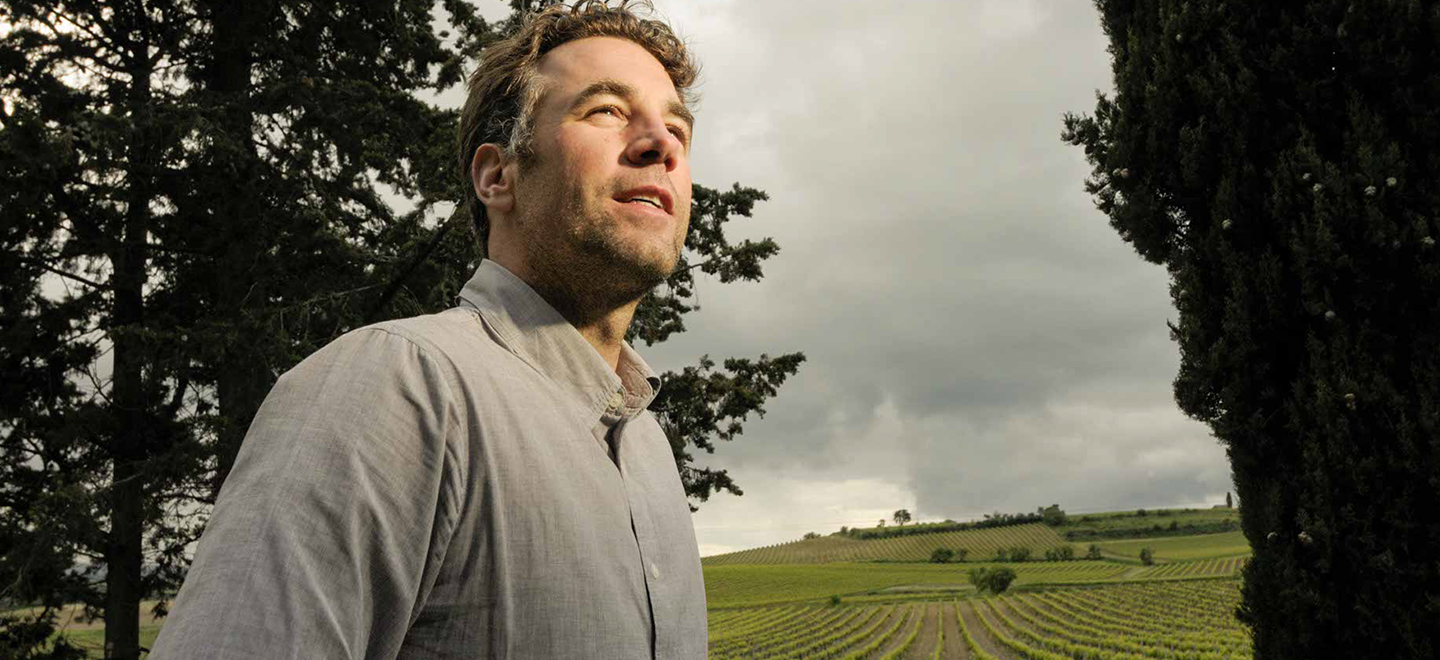 Region:
Region: -
Description:
Much of the wine that comes under the name of Muscadet is indifferently made and destined for casual glasspours in Paris bistros or patio sipping. However, a small cadre of estates in the region is dedicated to good farming and quality winemaking. Château Guipière is a fresh face in that group making its coast-to-coast national debut in the US with Bowler.
Founded in 1842 and situated in Vallet, just southeast of Nantes where the Loire River spills into the Atlantic Ocean, Château Guipière is a 28ha estate focused on cultivating the two mainstay grapes of the region, the Melon de Bourgogne which is bottled under its much more well-known AOP Muscadet Sèvre-et-Maine, and Gros Plant (a.k.a. Folle Blanche) a specialty of the region which attracts a small cult audience for being one of the most racy, high acid, minerally white wines in the world.
In 2015 the Château and its vineyards became the property of current owner Philippe Nevoux, supported by Stéphane Gouraud, his vineyard manager and cellarmaster. In the years since, this team has transformed the winery into a burgeoning fine wine estate. The major change was to pursue HVE3 Certification (Haute Valeur Environmentale or “High Environmental Value”). This includes commitments to biodiversity conservation, managed fertilizer use, eco-friendly plant protection strategies, and water resources management. Protecting and nourishing the estate’s heritage vines, some of them up to 60 years old, is not just a viticultural imperative but a genuinely ethical one in the 21st century.
UPDATE: After 3 years of organic transition, 2024 will be the year of the Estate's first certified organic harvest.Another impressive practice at the winery is their commitment to bottling single-vineyard cuvees, thereby shining a spotlight on the different terroirs of their property. Lined up and tasted comparatively, these wines are a revelation of how Muscadet—often perceived by outsiders as a homogenous region—can produce nuanced and deliciously different wines from its varying geologies.
Bowler has chosen to carry three of these single-vineyard Muscadets and the fabulously bright, quaffable Gros Plant whose stained-glass fish label is destined to pop up everywhere in US stores and restaurants. We could not be happier and more excited to start working with this wonderful new estate.Image: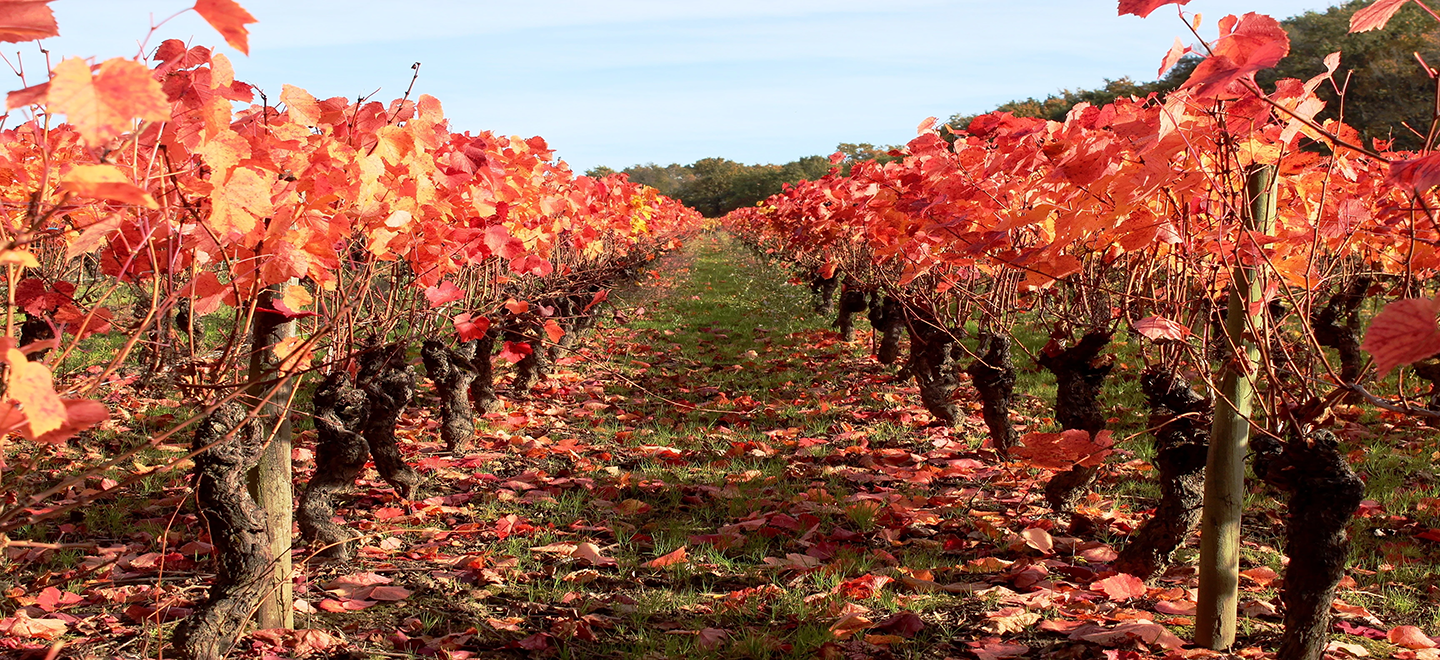 Region:
Region: -
Description:
Located close to the vineyards of Saint-Emilion, this château has been in the Borderie family for five generations.The house style is classic: savory and elegant with ample fruit graced with a dusting of mineral aromatics. The wines are remarkably consistent from vintage to vintage. You will be hard pressed to find a better Bordeaux under $20.
Image: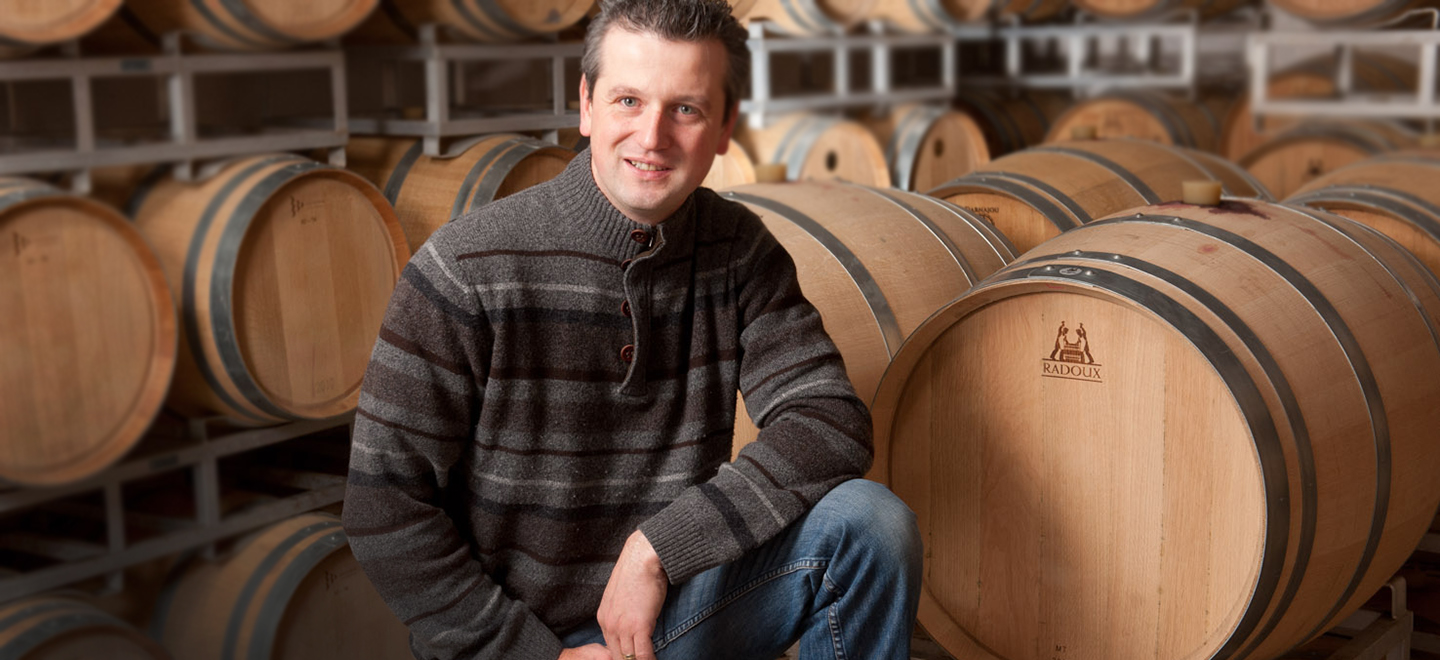 Region:
Region: -
Description:
Château Mourgues du Grès is one of the pioneers of the Costières de Nîmes and is recognized as one of the very best estates in the region in the Wine Advocate and in the French magazines Revue de Vin de France, Guide Hachette, and Gilbert et Gaillard. Mourgues du Grès is run by Anne and François Collard. François’s father was the first owner and he made wine, but mostly sold grapes in bulk. François started his career in Bordeaux, working in the cellar at Château Lafite-Rothschild. In 1990, soon after the Costières de Nîmes received appellation status, François was inspired by the potential to make great wines from this little known appellation and he moved back to run the family winery. The first vintage bottled under the Château Mourgues du Grès name was in 1993.
Nîmes historically made great wines that were famously served centuries ago to the pope of Avignon. The wines were made by the Ursulines nuns of Beaucaire. The nuns were identified by their location; the nuns of the river, nuns from the sea, or nuns from the stones. Mourgues means ‘nuns’ in Provençal, an ancient French dialect. Mourgues du Grès means ‘nuns of the stones’. The nuns managed fruit orchards and vineyards and the Collard family still manages both today.
The Costières de Nîmes is the southernmost region of the Rhône Valley. The terroir is influenced by the Rhône and the Mediterranean Sea. Like most of the southern Rhône, there is abundant sunshine, the weather is hot and mostly dry, and the Mistral wind helps to keep the vines healthy. The vineyards are covered with galets, the same round, flat stones that are famous in Châteauneuf-du-Pape. The Costières de Nîmes is unique within the Rhône region because of the influence of the Mediterranean. The sea cools the nighttime temperature, giving the wines a lot of freshness.
Château Mourgues du Grès is on the plateau of Beaucaire, where they benefit from both northern and southern sun exposure. They have a mix of soils, galets stones, sand, and they even have an area with limestone, which is quite rare in the appellation. The Collard’s have always been innovators, working to unlock the very best of the terroir. François’s father was the first to plant Syrah in the region and today it is the most widely planted variety in the Costières de Nîmes. Syrah grows especially well here because of the cool nights. François planted Marselan in 2007 and reported the results back to the appellation administrators and it’s now allowed to be up to 10% of the blend in the red wines. It adds complexity and freshness and has a lower alcohol.
François and Anne are both very passionate about nature. They have practiced organic agriculture since 2004 (certified in 2011); meticulous care and attention are paid to the work in the vineyards. François and Anne Collard never rush to make changes, but at the same time, are constantly searching for the best way to manage their vineyards to get a very pure expression of the Costières de Nîmes. In 2018, they began the process for biodynamic certification and from the 2020 vintage, the wines are certified.
Like the work in the vineyards, in the cellar, all decisions are carefully taken with the aim of getting the best expression. For the Collards, this means making wines in a natural way while maintaining a classic style. Whites and rosés are fermented and aged in stainless steel tanks; the reds are fermented in cement so that there is an oxygen exchange, and then are aged in cement or barrels depending on the cuvée. Since 2015, no sulfur is used during vinification or aging on any of the wines, only a small amount at bottling. Total sulfur used is approximately 50mg/L on the whites and rosés and 40mg/L on the reds. Making wine without sulfur has its challenges, but it is worth the risk for all that is gained in greater fruit purity.
Each bottle shows the emblem of the sundial that is on the wall of the winery, with the words "Sine Sole Nihil," which translates to "There is nothing without sunshine." For Mourgues du Grès, this symbolizes the maturity and harmony expressed in their wines. The Collards are dedicated in every step of the process to make the best wines and their work shines a light on what is possible from this modest appellation. The culmination of more than thirty years of the Collards work has established Château Mourgues du Grès as one of the very best in the Costières de Nîmes.
Image: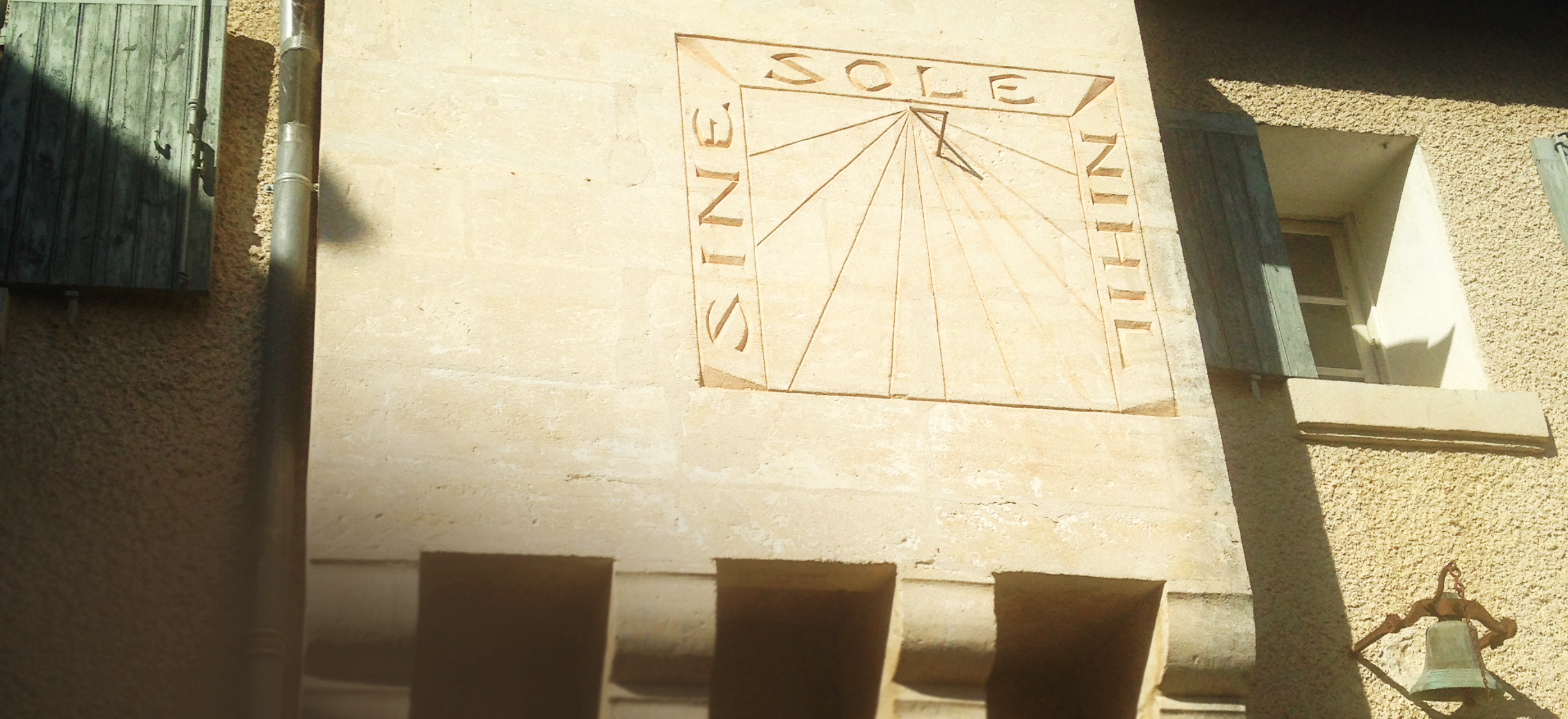 Region:
Region: -
Description:
For several generations the Paumel family has farmed grapes in the Rhône Valley. The current patriarch, Jacques Paumel took control of the estate in 1962 from his father, and in 1988 he and his wife Josephine decided to start estate bottling their own wines using the name of the hill on which their ancient provençale farmhouse and many of their vines are situated. Technically semi-retired, Jacques and Josephine have turned over the running of the estate to their daughter Florence and her son Paul Verité.
The Estate is 25 hectares in size with 3 ha in Châteauneuf-du-Pape in the lieu-dits of La Crau, La Guigasse and Saintes Vierges. All are sandy terroirs. The Grenache found in these sites was planted in 1929 or in 1942 while the Mourvedre is a relatively recent addition, having been planted by Jacques in 1967. They have a 1.5 hectare plot of Grenache and Mourvedre, planted on clay limestone soil and located just outside the appellation of Châteauneuf du Pape in the lieu-dit of Clos de Grenadiers. The Grenache dates to 1925 and they are the oldest vines that the family owns. In 1969 Jacques planted Mourvedre and Grenache to supplement these old vines so it now totals 7 hectares. From this site the family makes their Côtes-du-Rhône Villages. In Plan de Dieu they have a newly acquired plot of 70-90 year old Grenache, Mourvedre, Cinsault and Syrah grown on gravelly red clay soils. Finally there are 10 hectares of Grenache, Cinsault and Carignan, also on clay limestone soils and quite near the cellars of Mourre du Tendre. These vines are the source of their Côtes-du-Rhône.
Farming at Mourre du Tendre is minimalist and traditional. Everything is done by hand and the family has never used pesticides in their vineyards. The harvest is conducted in several passes and the grapes are carefully sorted when they reach the cellar. The Paumel family makes powerful and traditional wines and the fruit is not destemmed, fermentations occur spontaneously after a short semi-carbonic maceration, and the elevage is quite long – averaging about three years in a combination of concrete tanks and foudre. The resulting wines are charming, bold and structured with much more in common with Barolo and Barbaresco than most anything else you will find in the region. Needless to say they age beautifully and gracefully, even the Côtes-du-Rhône.
This profile, including all tasting notes and photos, was edited from the European Cellars website. For more information please visit: European Cellars.
Image: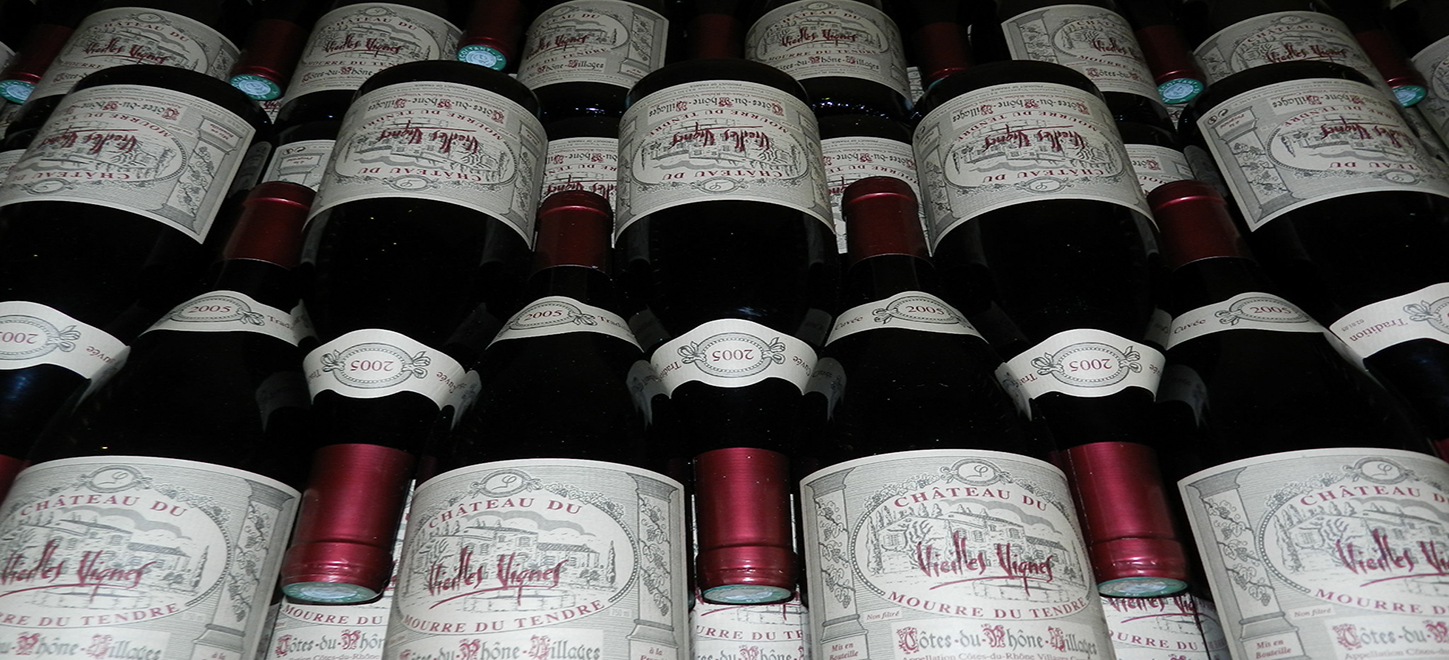 Region:
Region: -
Description:
The names Sauzet, Carillon and Leflaive have become synonymous with Puligny, but one local clan has remained under the radar. The Chavy family has had roots in Puligny for almost 200 years. In 1976, after years of selling grapes to négociants, they began to bottle wine under their own label, and Domaine Gerard Chavy et Fils soon established itself as one of the finest domaines in the village; however, in 2003, after a family dispute, the estate was dissolved. The brothers Jean-Louis and Alain Chavy, who had jointly run the domaine, went their separate ways, each determined to build his own legacy.
Alain Chavy is the owner of Chavy-Martin and has some pretty incredible holdings. In addition to the prestigious plots Les Folatières, Le Champs Gain, and Les Pucelles, the domaine owns a precious parcel in Le Clavoillon. Les Pucelles and Les Clavoillons sit adjoined on the slope, but Chavy-Martin is one of only two cellars in Burgundy where you can taste them side by side. Domaine Leflaive owns the vast majority of the 5.59 hectare Le Clavoillon, but the Chavy brothers each claim a small portion, preventing it from being a monopole. Alain farms just under half a hectare of 50 year old vines in Les Clavoillons, and from it he produces a wine of great depth and minerality (and limited availability.)
Image: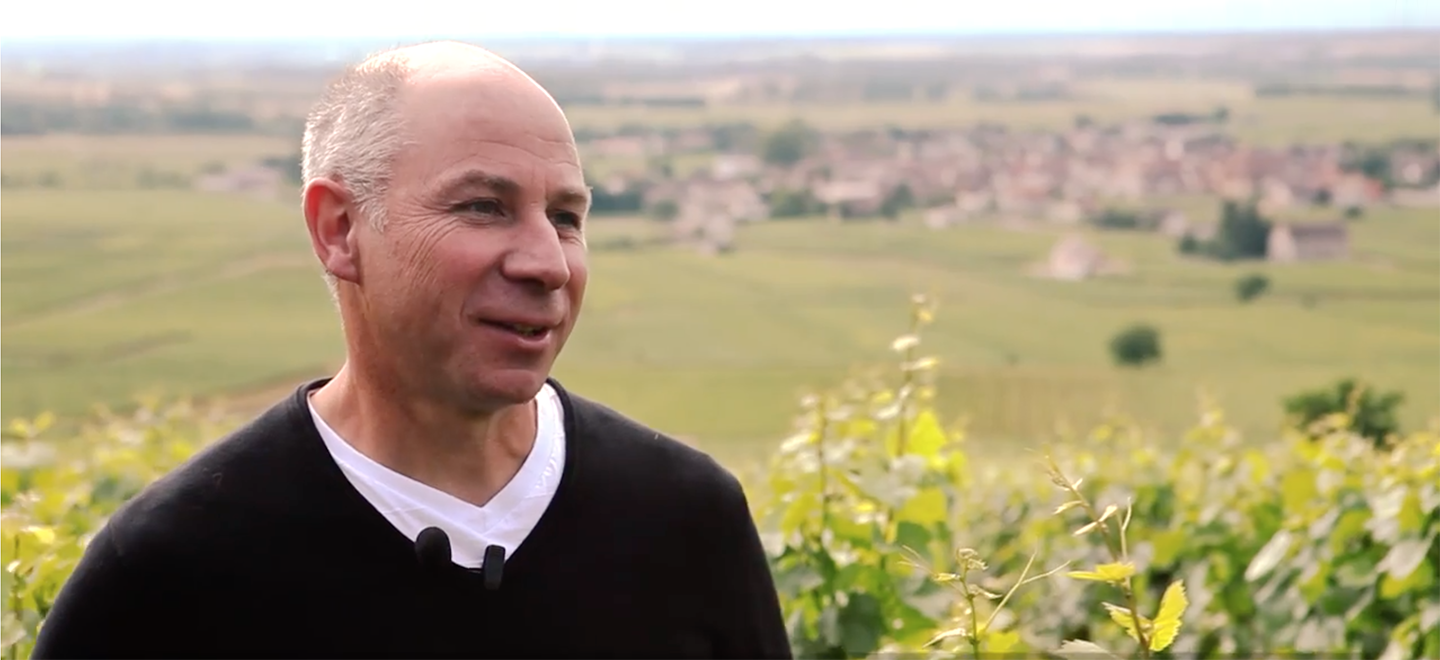 Region:
Region: -
Description:
Maranges is located at the southern-most part of the Côte de Beaune, producing red wines that Clive Coates describes as “honest, sturdy and rustic in the best sense… (and) with good acidity”. This was the reputation of Maranges, but it's changing, in no small part due to the work of the Chevrot family. The Chevrots have been making wine in Maranges since 1830, and today the winery is run by two brothers, Pablo and Vincent Chevrot. Their parents started bottling wines under the Domaine Chevrot name in the nineteen seventies and the family played a key role in Maranges becoming an appellation, which was finally granted in 1988. Before 1988, wines here were classified simply as Côte de Beaune - Villages. It's worth noting that the appellation of Maranges covers three small villages: Dezize, Sampagny, and Cheilly. Pablo Chevrot was President of the appellation of Maranges for a few years, so if you have any questions about Maranges, he is a good person to start with. Now, aside from managing the winery, he keeps himself busy as a founding member and the Vice President of "Les Aligoteurs", an association of wine growers with old-vine aligoté who aim to promote high quality aligoté, made by talented winemakers.
Today, Domaine Chevrot owns 18.5 hectare of vines; 50% pinot noir, 40% chardonnay, and ten percent aligoté in appellations of Maranges, Santenay, and the Hautes Côtes de Beaune. Their oldest plots were planted by the current winemakers’ grandfather and are up to 75 years old. The brothers, Pablo and Vincent have maintained the traditions of their parents but have built upon their success: starting with conversion of the vineyards to organic viticulture in 2008. Working the soil is important and they own two horses and are now ploughing five hectares by horse. Seeded cover crops are another important element that brings fertility to the soil, aerates and restructures the soil, and limits erosion. Different plant types bring different elements: grains for structure, beans and clover trap nitrogen from the air and it gathers in the roots, getting released back to the soil. And cruciferous plants, like mustard, bring minerals and aerate the soil. They use organic compost in the vineyards and a minimum of copper and sulfur treatments as needed to treat oidium and mildew. They are practicing biodynamics as well but are not certified.
Chevrot's goal is to make wines that reflect their terroir and the vintage, which means as little tinkering in the cellar as possible. The brothers never add enzymes, acidify or chaptalize and the red wines do not see any sulfur until bottling. The entry-level cuvées are destemmed and some whole clusters are kept on the village and 1er cru cuvées. Fermentations are completed only with the indigenous yeasts. The total sulfur is ten milligrams per liter on the reds and 30 - 50 milligrams per liter on the whites. The amount of new oak used depends on the cuvée and it's always used judiciously; Pablo explained that oak is necessary in Maranges because the region produces very powerful wines like Pommard or Nuits-Saint-Georges. The wines show exceptionally well young, something that Pablo attributes to not using much sulfur.
Bowler has been working with Domaine Chevrot since 2010 and its been incredible to follow their journey. Maybe ten years ago, the wines had elements that could have been described as "sturdy and rustic". They were very powerful wines then and they still are today, but now, when I look through my tasting notes, amongst all of the detailed terroir info (Pablo is a fount of knowledge; great terroir map here), I see certain words repeated, "chrystalline, great tension, structured and pretty, yummy," and the highest praise, "excellent!!!" Over the years, they have fine-tuned their work and one word that I agree with Coates on is "honest". The Chevrot wines are a true expression of their terroir and show great purity with nothing added. -Michele Peters, Bowler Portfolio Manager.
Image: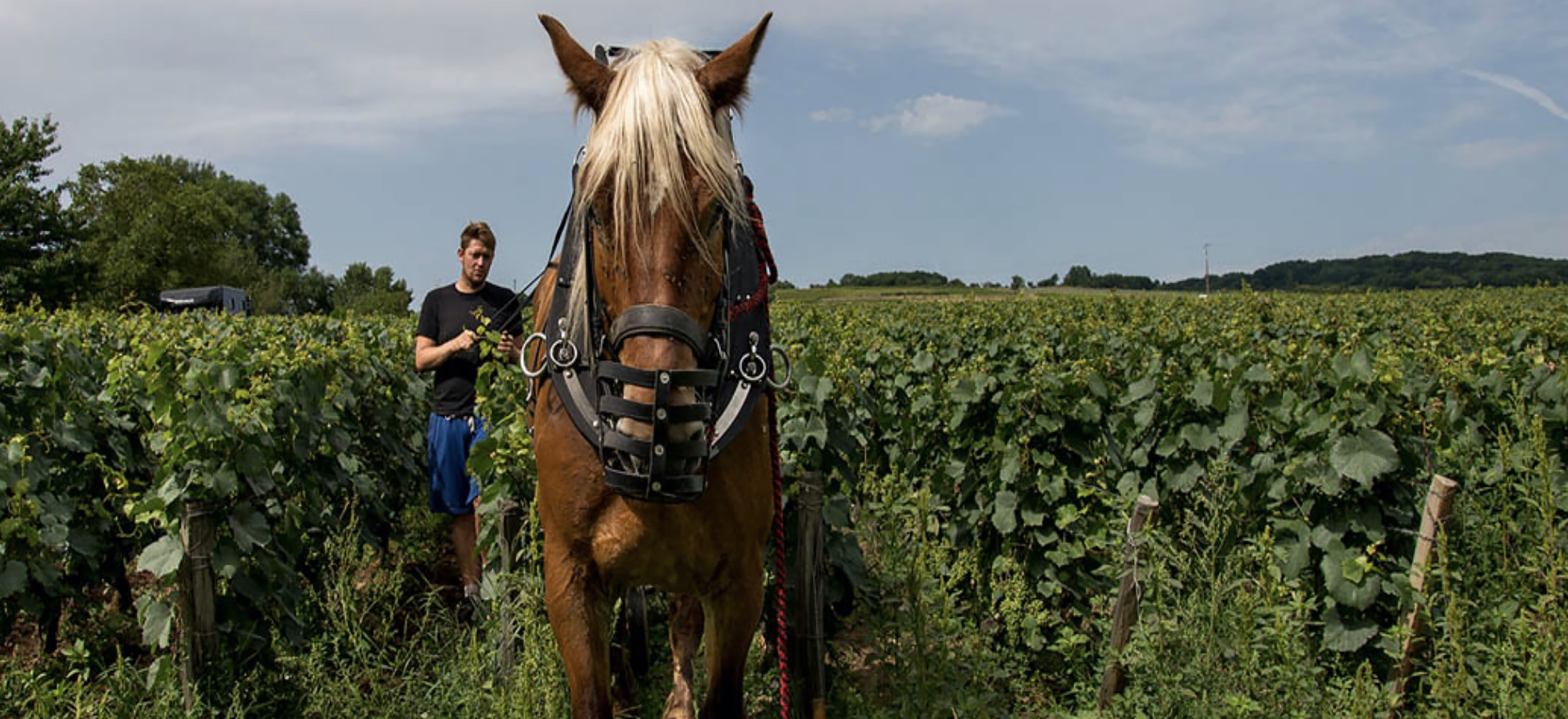 Region:
Region: -
Description:
Ron de El Salvador Cihuatán is El Salvador’s only rum distillery. Ron Cihuatán’s story dates all the way back to the ancient Mayan city of Cihuatán. According to legend, a goddess bestowed Cihuatán with riches and fertility, with her spirit watching over the sugarcane fields remaining in the shape of the Guazapa Mountain. This El Salvadorian rum is named after this legend, which in Nahuat “Cihuatán” translates “the land beside the sleeping woman.”
Produced by Licorera Cihuatán, a subsidiary of Ingenio La Cabaña of El Salvador. This rum is made using a 100-year-old sugar cane mill. Licorera Cihuatán distillery was established in 2004 and began distilling and aging their rums. After fermentation the rum is aged in new and used American oak bourbon barrels using the Solera method. The age statement is minimum age.
El Salvador’s first rum, this spirit is handcrafted 100% by Salvadoran hands. “Our rum’s mystical surroundings, our sugarcane and aging methods, mixed with our hard work and patience, give Ron Cihuatán an unmistakable quality,” says Gabriela Ayala, Cihuatán’s Master Blender.Image: Region:
Region: -
Description:
Skye is home to storm-battered mountains, impossible rockfaces and an ancient clan that bares their name. Clan Macleod is a small-batch blended Scotch that brings together hand selected malt and grain whiskies.
Blended Scotch Whisky is a blend of one or more whiskies, which may themselves be made from any combination of malted and unmalted grains. These stunning blended whiskies are the only Blended Scotch whiskies bottled at 46% ABV. No cold filtration. For a rich depth of flavor at a fantastic value.
These whiskies were brought to us by Keepers Quest , Ed Kohl and Ian Macleod. Ian was an Icon of Whisky winner in 2018.Image: Region:
Region: -
Description:
We are honored and excited to be working with Clemens and Rita Busch, biodynamic practitioners in the Marienburg vineyards of Pünderich. Clemens is the fifth generation winemaker at this estate (all the previous ones were also named Clemens; ever the iconoclast, he named his son Florian). Clemens started working in his father’s 2-hectare estate in 1975 and has spent his career expanding the acreage and breadth of his holdings to 18 hectares, almost all on the slopes of the Marienburg. He stopped using herbicides in 1976, then in 1984 he and wife Rita converted to organics. They were among the first in Germany to commit to organic viticulture and led the movement establishing an association of organic growers in 1986. The estate converted to biodynamics entirely in 2005, earning certifications from the EU and Respekt-Biodyn. Clemens holds a permanent place in history as a role model and beacon of change among German winemakers.
Location is crucial to mention here. Pünderich lies essentially at the dividing line between the Middle and Lower Mosel, the wilder and more remote northern section of the Mosel river system. The geology here is unique, based on a volcanic formation hundreds of millions of years old, manifested in a long, undulating cliff face that is nothing short of epic. The three main colors of slate (blue, red and grey) are all found here, dominating different parcels along the slopes across the river from the village. In spite of multiple slate profiles and expositions varying throughout the area, the German government in 1971, in a bureaucratic decision of breathtaking short-sightedness, lumped all these parcels together under one vineyard name, the Marienburg. Furthermore, they expanded what was a 23-hectare geographically coherent site into a 90-hectare politically drawn one, which even includes a series of flat sites on the opposite side of the river! Clemens has devoted his career to rectifying this mistake, identifying the different terroirs of the original hillside on his labels by their historical names: Fahrlay, Falkenlay, Rothenpfad, Felsterrasse, and Raffes. He further delineates his wines by their soil type, using an ingenious method: the color of the capsule on the bottles indicates the type of slate (blue, gray or red) that dominates the source from which each wine comes.
Most of the wines at the Busch estate are vinified dry, and they are rich, complex and often powerful. They age very beautifully, gaining in complexity and texture. However, the sweet and noble sweet wines from the estate are also impressive, ranking among the finest wines made anywhere on the Mosel.
It is important to note there are not a lot of committed "natural" winemakers in Germany in the sense that we know it from France and elsewhere; Busch is considered by many to be THE master interpreter of that philosophy in Germany. In numerous ways, these are some of the most iconoclastic wines we have ever tasted. More information is available on the Clemens Busch website.
Image: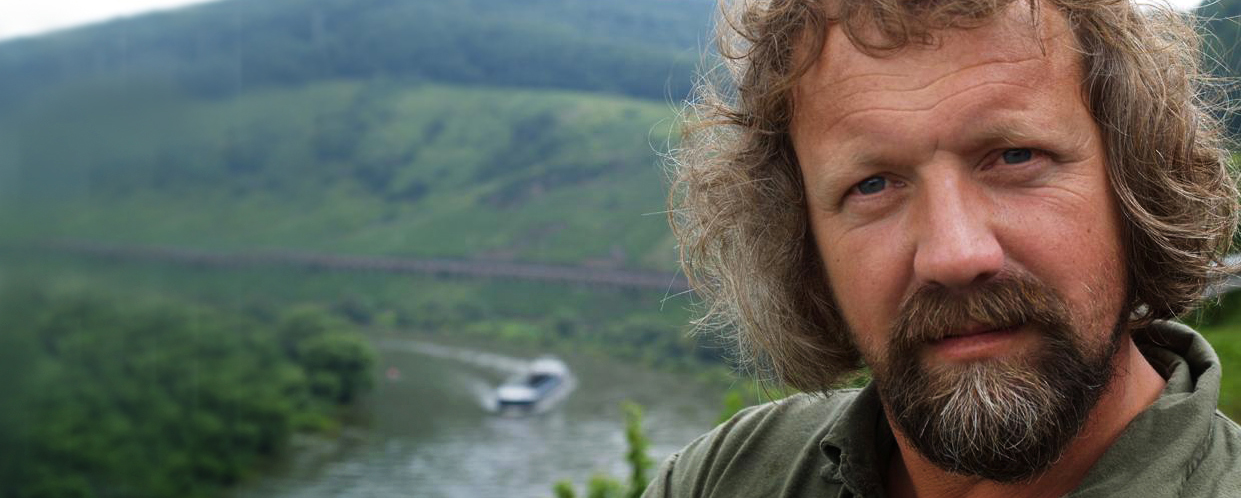 Region:
Region: